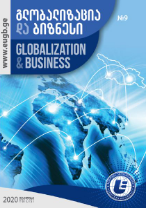SCIENCE AND ECONOMIC POLICY
DOI:
https://doi.org/10.35945/gb.2020.09.022Keywords:
SCIENCE, ECONOMIC POLICY,FOURTH, FIFTH SECTOR OF ECONOMY, TRIAD PATENTSAbstract
In modern society human existence depends largely on scientific knowledge. Moreover, the world of our surroundings, events and the things we need are partly the result of scientific knowledge.
Science is a multifaceted social phenomenon. It is important to list some of the key science facets:
- vision function;
- Economic function of science;
- Science is also an element of culture.
In postindustrial society the fact that science and technology are intertwined is of particular importance since the development of technology without scientific knowledge is difficult to imagine. It should also be noted that science is at the core of everything in general: technology development, education, knowledge-based economics and human capital, published researches, published scientific articles, number of triad patents, innovations.
In view of the foregoing, the issue is of very urgent and pragmatic importance. It is therefore advisable to discuss Holden and Russell›s views on science.
Using the comparative analysis method, we will generalize three basic theories about science:
- The theory of evolutionary development of scientific knowledge (cumulative theory);
- The theory of revolutionary development of scientific knowledge;
- Conciliatory concept.
Using the comparative analysis method, we will identify one optimal theory and discuss it in the context of economic policy.
The context of the relationship between science and economic policy implies many problems. In this article, we will discuss the main problems of science field and find ways to solve them using economic policy.
We will analyze which economic policy approaches will be most optimal for solving problems in science (positive economics; normative economics; political economics;).
In our opinion, it is important to consider whether it is appropriate to include education and science in the third sector of the economy.
In the example of different countries of America, we will analyze the statistics for 2010-2016. Specifically, what percentages of gross domestic product from the state budget are used to finance science and technology? Using the method of comparative analysis, we determine the trend formed in the given time series.
Downloads
Downloads
Published
Issue
Section
License
Copyright (c) 2020 Globalization and Business

This work is licensed under a Creative Commons Attribution-NonCommercial-ShareAlike 4.0 International License.









